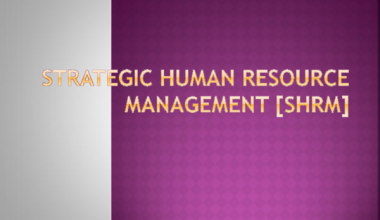Disruption is the new norm in the 21st-century workplace, whether it stems from technological advancements or changing market dynamics. In just a few years, organizations have come face to face with the impact of remote and hybrid work models, the Great Resignation, and the emergence of artificial intelligence.
All these factors have been greatly disruptive to the workforce. According to a 2022 report, 37% of the skills needed in the average job have changed over the past five years. To thrive in this environment, organizations need to become more strategic in their approach to skills management and move beyond traditional workforce planning methods.
This is where skills forecasting comes in, not as a standalone approach, but rather as an integral part of strategic workforce planning. This integration allows HR leaders to be more accurate in identifying future skill needs, so they can address gaps and develop a talent pipeline accordingly, strengthening the company’s position in the market.
In this blog post, we discuss some practical steps to help future-proof your workforce against disruption through the integration of skills forecasting and strategic workforce planning.
5 Steps to Integrate Skills Forecasting into Strategic Workforce Planning
1. Develop a Stronger Relationship with Management
In many organizations, there is a gap between HR and senior management. Top-level executives and HR managers may not be on the same page as to the company’s strategic priorities, simply due to the lack of consistent dialogue. The so-called “HR-to-CEO gap” can eventually lead to skill gaps and a significant lack of competitiveness. Bridging this gap requires stronger and ongoing collaboration, to ensure that the workforce is ready for future growth and for any changes that may happen in business focus or operational needs.
Suggestions:
- Schedule regular check-ins with managers and senior executives to discuss upcoming projects, expansion plans, or any technological changes that may impact your staff’s skill sets.
- Ensure HR managers have a clear vision of the company’s five or ten-year strategic plan, while senior executives understand current workforce planning efforts and the rationale behind them.
2. Conduct a Comprehensive Skills Gap Analysis
The next step involves performing a skills gap analysis with the objective of clearly pinpointing where the organization is lacking critical skills and expertise.
Suggestions:
- Use skills management or skills intelligence software to create an inventory of existing and missing skills across the entire organization. Ideally, choose a tool that not only identifies skills gaps but also reveals hidden skills within your talent pool.
- Determine where each missing skill fits within existing competency frameworks. This can reveal where to adjust job descriptions or if new roles are necessary to address skill gaps.
3. Use Data and Technology to Anticipate Future Trends
It’s vital to anticipate industry trends that may impact your company’s competitiveness in the skills marketplace. Tech tools like talent planning software, skills management platforms, and labor market analytics offer the data-driven insights needed for effective skills forecasting. The more accurate the data, the more targeted and agile your workforce planning initiatives.
Suggestions:
- Choose skills management platforms that allow for real-time tracking of employee skills and dynamic follow-ups on progress.
- Consider using machine learning and AI-powered analytics tools for skills forecasting. These tools can simplify workforce planning, provide accurate insights, and help prioritize the skills needed to stay competitive in a changing market.
4. Optimize Your HR Investments
Once you have a clear picture of the skills your organization will need in the future, the next step is to strategically allocate budgets to build those skills. A recent survey found that learning and development is one of the top four HR investment areas for 2024, with budget increases of more than 30% in just one year. Budgeting should consider various forms of micro-learning, upskilling, reskilling, and talent sourcing.
Suggestions:
- Focus HR investments on the high-impact roles that are most critical to the company’s future strategy.
- Track ROI on HR investments by monitoring metrics like employee performance, engagement, retention, and internal promotion rates, and adjust strategies accordingly.
5. Account for Succession Planning
Integrating skills forecasting into succession planning helps ensure future leaders are well-prepared and equipped with the necessary skills to guide the organization through disruption and growth. This reduces the risk of leadership gaps and ensures workforce planning aligns with long-term company goals.
Suggestions:
- Map future leadership needs and identify the roles and skills essential for achieving business goals.
- Create tailored development plans for high-potential employees. Internal mobility is often more cost-effective, helping your company develop leadership readiness from within.
Conclusion
To thrive in an environment marked by disruption, organizations need to proactively anticipate their future skill needs. As discussed, skills forecasting alone is not enough—it must be integrated into strategic workforce planning.
By improving collaboration between HR and senior management, conducting comprehensive skills gap analyses, leveraging data-driven technology, optimizing HR investments, and incorporating succession planning, HR professionals can ensure that their workforce is prepared for future challenges and more competitive in a dynamic market.






